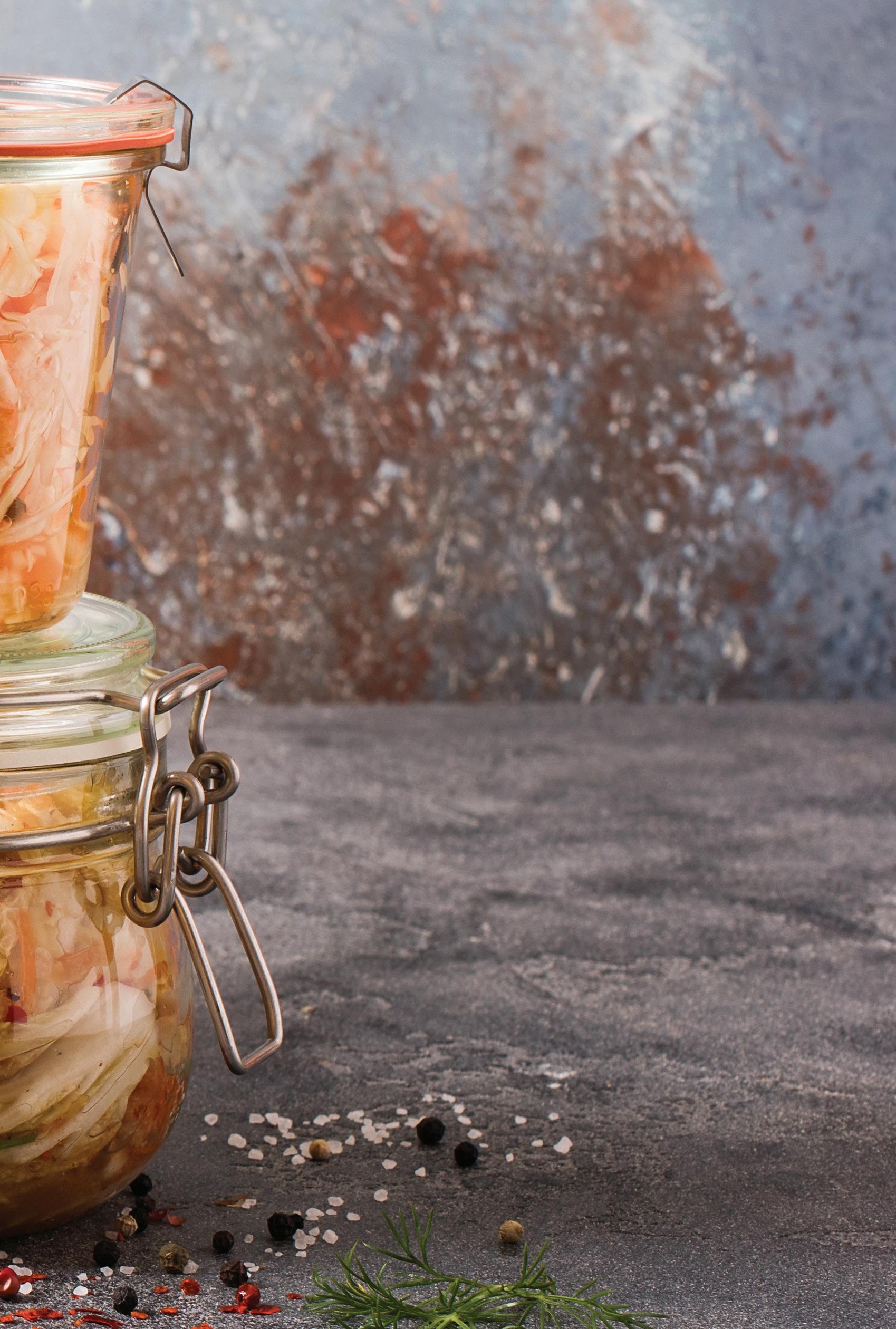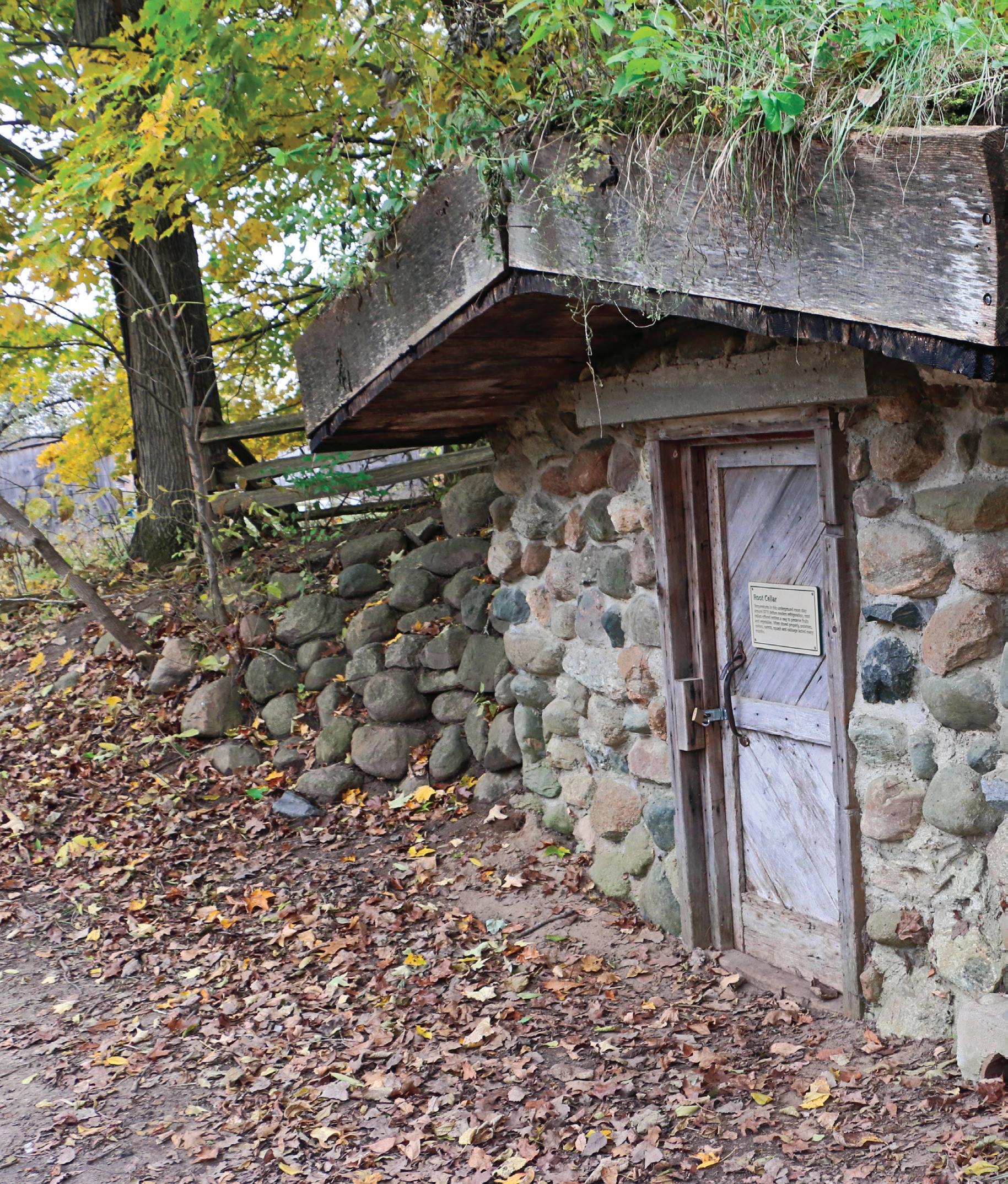





Although it might seem like a modern method of preservation, freezing food for storage has been practiced for millennia. The Chinese were the first to build ice cellars to help keep their food fresh nearly 5,000 years ago, and the Romans are known to have packed layers of snow in pits that could be considered one of the earliest iterations of the icebox. By the 18th century, moving ice became big business as clever entrepreneurs found better ways to transport and market the frozen blocks to upscale customers who enjoyed the convenience of longterm food storage, as well as the taste of a cold beverage.
By the mid-1800s, artificial refrigeration started to take hold as a viable means of storing meats and vegetables at a commercial level, and, in the 1920s, Clarence Birdseye introduced the first freezer chest as we know it today. Less than 10 years later, Birdseye capitalized on his invention by debuting the first line of frozen foods at a retail grocery store. While these packaged, frozen foods received a lukewarm welcome from shoppers at first, it didn’t take long for consumers to appreciate the value and convenience of these new products. By the 1950s, Americans had completely embraced the frozen-food aisle as the “deep-freeze”
freezer chest became a common appliance in many homes, filled with frozen pizzas, ready-made meals, fish sticks, and prepared vegetables.
Freeze-drying is a method of dehydration that uses extremely cold temperatures and vacuum pressure to remove water from foods, through a process known as ‘sublimation.’ This is an incredibly efficient way to preserve food, and household freeze-drying machines are widely available for purchase, though they are a substantial investment compared with other household foodpreservation equipment.
Alongside these prepackaged convenience foods, we can also put up leftovers to save for another day or preserve the bounty, whether it’s harvested from our gardens or procured from our local farmers. There’s something to be said for the thrifty shopper who makes the most of discounted produce by chopping, blanching, and freezing produce to enjoy long after the sale has passed. We can do the same. The freezer is a long-term food-storage option with only a few drawbacks: the cost of purchasing the appliance, the finite storage space, and the reliance on electricity to keep the machine running. Thankfully, most of us have at least one small freezer in our homes already, and for those with a budget for it, larger freezers are widely available for purchase, new or used.
We can choose from two main styles of stand-alone freezer, and both come in various sizes depending on your needs, available space, and budget. The first is a freezer chest that opens from the top. These models are great for storing large quantities,
58 the heritagePantry
but because of their design, I find them difficult to keep organized. Filling the appliance from the top means many things will end up on the bottom, with other items stacked on top. I like to use our freezer chest for meat or fruits that we might have in bulk. If you hunt deer, raise cattle, or purchase beef and pork in bulk, a freezer chest is perfect for holding the various packaged cuts from the butcher. I also like to freeze fruits, such as blueberries, raspberries, and strawberries, in 1-gallon freezer bags that can easily be stacked on top of each other in the chest.
The other style of freezer is a standup model, similar in design to a refrigerator, with a long vertical door and several wire shelves inside. I find this type of freezer to be much easier to keep organized, and some models have adjustable shelves that allow you to make room for larger items. We have both types of freezers here at Small House Farm, but the stand-up version gets the most use. I try to keep the freezer well-stocked, but sometimes our supply of frozen food will run low. If your freezer isn’t mostly full, you’ll want to put some bags of ice or jugs of water in the empty space, as this will help the machine run more efficiently. It’s also important to choose a freezer that’s the right size for your needs. The cost to run the freezer will be the same no matter how much food you have in it, and paying to run an appliance that’s only half-full isn’t cost-effective.
Aside from the freezer itself, it takes very little equipment to prepare and package food for freezing. The key to successful, long-term freezer storage is airtight packaging. The food needs to be
60 the heritagePantry
Follow a few basic rules when thawing your food to protect yourself from foodborne illness. The No. 1 rule is to never thaw food at room temperature on the counter. Bacteria will quickly reproduce at temperatures between 41 and 135 degrees Fahrenheit, and food sitting on the counter is ideal for bacterial growth. The four safe ways to thaw food are:
1. In the refrigerator. This is the safest way to thaw food, since it will be held at a safe temperature during the entire thawing process. It’s also the slowest method and can often take 12 to 24 hours for the food to completely thaw.
2. In cold running water. This is also a slower process and can take 30 or more minutes per pound of food. The continuous flowing water stays cool and keeps the surface of the food below 70 degrees. The food should be thawed in its original container or in a resealable plastic bag. Using this much water warrants careful consideration; perhaps save this water to be used later in the garden rather than waste it.
3. In the microwave. This is a fast way to thaw out food, as it heats and partially cooks the food during the thawing process. We don’t have a microwave at Small House Farm, so we don’t use this method.
4. Cooking. This is the easiest and fastest way to thaw some foods. It works particularly well with ground meats, soups, and sauces.
Any of your favorite fruits will make a fine jam. At the grocery store, you’ll find countless jars of raspberry, strawberry, and mixed-berry jams. All are delicious, and all are easy to make right at home. While I enjoy each of these delightful flavors, my absolute favorite jam is made from blueberries! Every summer since we’ve lived at Small House Farm, when blueberry season arrives, we pack up a picnic lunch and spend a day at the local blueberry farm gathering the tasty fruits — and “sampling” them by the handful while we’re at it!
We freeze plenty of berries to enjoy throughout the rest of the year, but it’s always nice to preserve some of this summer goodness in a sweet and tasty jam. The addition of cinnamon adds a warming spice that really complements the blueberries. It’s great on toast, though I mostly use blueberry jam as part of my favorite barbecue sauce recipe. The combination of blueberries and cinnamon pair well with the bold acidity of tomatoes and the rich smoky flavor of molasses.
• 4 to 4 1/2 cups blueberries (approximately 1 1/2 pounds)
• 1 1/2 cups sugar
• 1/2 teaspoon cinnamon
• 1/8 teaspoon ground cloves (optional)
• 2 tablespoons lemon juice
• 3 ounces liquid pectin (optional)
1. Combine berries, sugar, spices, and lemon juice in a pot and bring to a boil. Reduce heat and simmer for 10 to 15 minutes. Stir frequently to prevent burning. Use the spoon to crush the berries slightly while the mixture cooks.
2. Remove from heat, stir in pectin, and then return to heat and boil for 1 minute. If you’re not using pectin, cook the berries down longer to reach your desired thickness.
3. Spoon jam into half-pint jars and process in a water bath canner for 10 minutes. If you choose not to process your jam, it’ll keep unopened in the refrigerator for up to 2 months. Be sure to label your jars. This recipe makes 3 half-pints.

Smoking meat is likely one of the oldest preservation techniques. Although there’s no direct evidence, it’s widely believed people have used heat and smoke to dry and preserve foods since the Paleolithic era.
Freshly harvested meat would be hung in caves, and smoke from a nearby fire would not only impart a unique flavor to the flesh, but also extend the meat’s shelf life. Smoking removes the moisture from food, creating an environment inhospitable to bacterial growth; the smoke itself also imparts natural preservatives into the meat. From barbacoa in the Caribbean and the smoked meat sandwiches of Montreal to Lapsang souchong tea in China and the smoked peat of Scotch whisky, cultures around the world have made use of this technique to create a wide variety of flavorful meats, fish, vegetables, and spices. I once had the opportunity to sample freshly smoked sea salt during a visit to a farm in coastal Georgia. Seawater was collected and evaporated to extract the salt, which was then placed in a smoker overnight to create a unique and flavorful product.
Modern smoking is more often focused on infusing flavor into foods rather than on preservation, but we can certainly use our smokers to make delicious creations and preserve them to be enjoyed anytime throughout the year. Often, smoking is combined with other preservation methods to ensure foods are safe for longterm storage. This is particularly important when preserving meats. Some recipes will call for the use of salt to brine or cure the meat, which will increase its shelf life. You can also vacuum seal and refrigerate smoked foods for the longest and safest
storage. Properly preserved meat, vacuumsealed and stored in the refrigerator, will keep for 3 to 6 months, or for 2 to 3 years in the freezer.
There are a couple of different methods of smoking, defined by the temperature at which the food is smoked and the length of time it’s in the smoker. Regardless of the method, meats are typically air-dried for a short period of time before smoking. This allows the outer layer of the meat to form what’s known as a “pellicle,” which allows for even and thorough penetration of smoke. Of course, this air-drying isn’t necessary for other foods, such as veggies, fruits, or cheeses.
Cold-smoking is the most often recommended method for preservation, and it can also be used to add flavor to certain foods. The foods are smoked at temperatures below 85 degrees Fahrenheit, which is too low to actually cook the food. In the case of cold-smoked meats, this method results in a final product that’s technically still considered “raw.” Meats are sometimes cold-smoked to impart flavor and then hot-smoked to finish the cooking process. Cold-smoked meats are typically cured before smoking to prevent hazardous bacterial growth. The low temperatures and lengthy amount of time the meat must be in the smoker would be dangerous otherwise. Some examples of cold-smoked meats include salmon, bacon, country hams, salami, and pastrami. While some cold-smoked meats are eaten “raw,” most of them are cooked in some way before consuming.
Pastrami is a family favorite here at Small House Farm. In fact, we love this

Abook about food preservation wouldn’t be complete without a brief word about the root cellar. The classic root cellar as we know it is said to have been developed sometime
in the 18th century, but the concept of storing food underground has been practiced by Indigenous cultures around the world for centuries. Using soil for insulation, root cellars can maintain